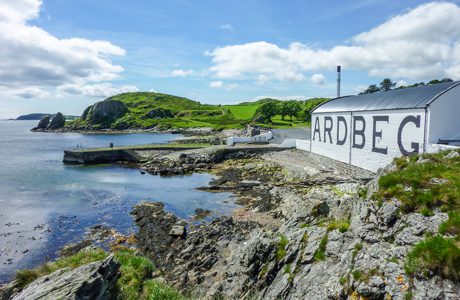
A series of seemingly amibitious environmental targets was announced by the Scotch Whiskey Association (SWA), the principal trade body for the sector, on 21 September. These include initiatives like responsible water use and cutting greenhouse gas emissions.
The Scotch Whisky Environmental Strategy – first launched in 2009 and said to be the only one of its kind covering an entire Scottish industry – has been refreshed to broaden its remit to reflect an evolving world and changing business operations.
The Scotch Whisky Association (SWA), which manages the strategy for the industry, says it recognises the need for a thriving natural environment. Scotch Whisky is made from three raw materials – water, cereals and yeast – and the industry has a responsibility to minimise its use of natural resources and its impact on the environment.
The refreshed strategy has four themes with voluntary targets to be met by the industry by 2020 and 2050:
– Reducing energy use and greenhouse gas emissions. By 2050 some 80% of primary energy will come from non-fossil fuels, such as anaerobic digestion and solar power. In 2008 this figure was 3% and increased to 17% by 2014.
– Responsible water use. Distilling water efficiency will improve by 10% by 2020. This target is based on companies optimising efficient water use at their production sites.
– Embracing a ‘circular economy’ in the industry supply chain. The aim will be to use resources for as long as possible, extracting maximum value from them and recovering and regenerating materials. For example, by 2020 no general waste will go to landfill, compared with 13% in 2008, and product packaging will be 100% recyclable.
– Sustainable land use. The goal is to ensure a secure supply of high-quality raw materials, namely cereals and wood. This includes encouraging the use of wood sourced from sustainable oak forests to manufacture new casks.
The refreshed Scotch Whisky Industry Environmental Strategy was launched at an event in Edinburgh on the evening of 21 September with a panel session that included Roseanna Cunningham MSP, Cabinet Secretary for Environment, Climate Change and Land Reform.
Julie Hesketh-Laird, Scotch Whisky Association deputy chief executive, said: “The refresh of the Scotch Whisky Industry Environmental Strategy is a clear sign of bold industry intentions on sustainability. Sound environmental management is an industry priority and goes hand in hand with business growth. Our strategy is collective, building on the work of individual Scotch Whisky producers. And strong support from governments and our supply chains will be needed to help deliver on our ambitions.
“The strategy remains the only one in Scotland covering an entire industry. It sets out challenging voluntary goals that will protect the natural environment for generations to come.”
Environment Secretary Roseanna Cunningham said: “The whisky sector has already made a significant contribution to increasing sustainability and I very much welcome this commitment to further progress. Making good whisky relies on quality ingredients and these in turn depend on our environment. It is heartening to see recognition of this in the SWA’s refreshed strategy, which is an excellent example of positive interaction between our natural environment and the economy.”






